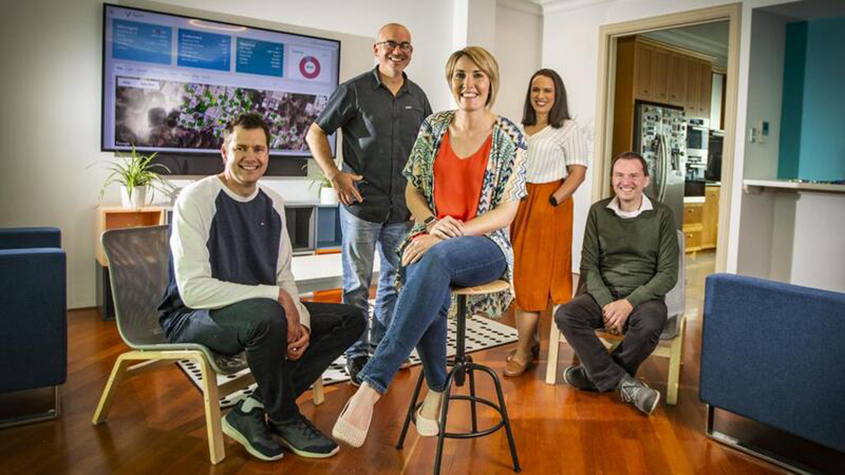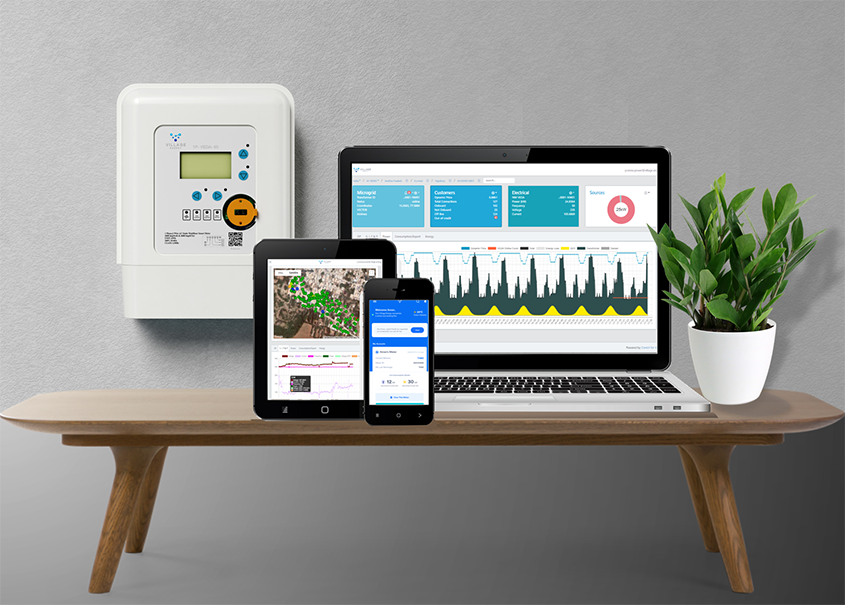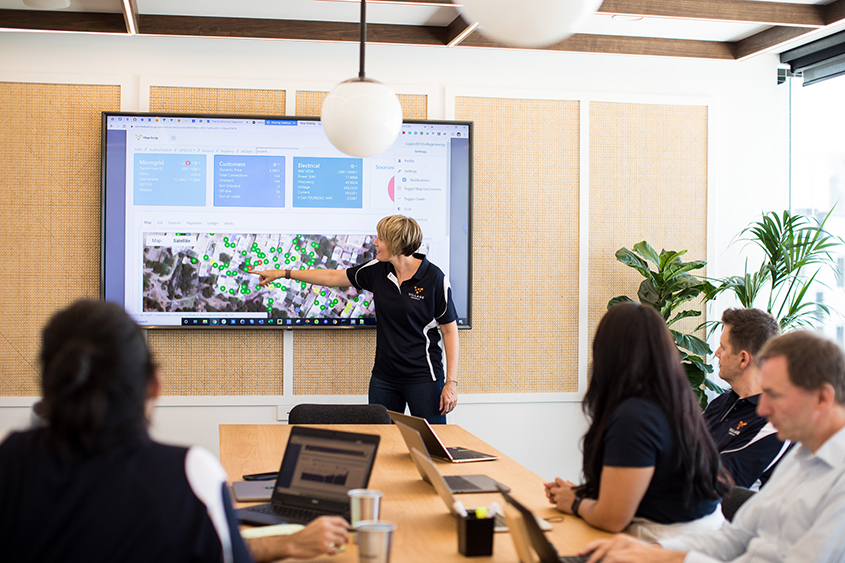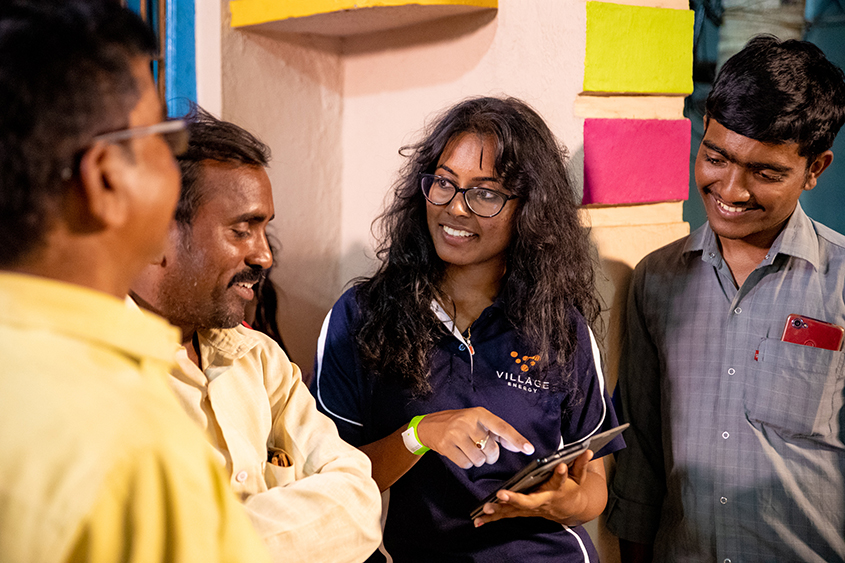

April 26, 2021
Could you imagine your life without electricity? For many around the world, a stable connection to the electricity grid is a dream, not a reality. As the global rate of electricity consumption continues to increase, innovators like Yvonne Power, Co-Founder and Chief Operating Officer of a start-up enterprise, Village Energy, are ensuring that the essential resource is not only accessible, but is also environmentally friendly.
Passionate about building a sustainable energy future especially in communities across the Asia Pacific, Yvonne is Co-Founder and Chief Operations Officer of Village Energy, a Western Australia born start-up that has developed energy technology to operate at the edge of the energy grid, delivering cleaner, cheaper, and more reliable power to underserved populations. Installed below the low voltage transformer, its poles and wires are attached to houses and businesses as opposed to high voltage transmission lines, delivering energy to the ‘last mile of the grid’. Village Energy – backed by a Bill Gates-chaired venture capital fund, Breakthrough Energy Ventures – has been recognized as an APAC 25 company, and is the 2020 winner of the Australian Technologies Competition’s energy award. Yvonne, a mother of three and 2020 40 Under 40 award winner, is helping to drive the shift to renewable and distributed energy microgrids.
In 2018, the world’s total electricity consumption reached 22,315 TWh, 4.0% higher than the previous year. Global electricity consumption continues to increase, including in the average amount of electricity consumed per person, according to the U.S. Energy Information Administration’s (EIA) International Energy Statistics. The International Energy Agency (IEA) estimates that 770 million people lacked access to electricity in 2019, most of whom resided in rural areas in Sub-Saharan Africa and South Asia with 578 million and 112 million people respectively.
Find out more about Village Energy's invention on the WIPO GREEN database, and register to contact the inventors directly.

Many girls and women reading this will be working or aspiring to work in traditionally male dominated industries, which can be extremely daunting. Women and girls should recognize that they have a unique perspective, and this is their super-power.
Yvonne Power
The transition of the energy sector is a fascinating space right now. Demand for energy is at unprecedented and unsustainable levels, and the way that power is generated and distributed is changing as technology advances. The emerging energy future is complex and daunting, especially for those that are most deprived of this essential resource. Billions globally lack adequate electricity to live comfortably and prosper. Meanwhile, in developed markets, increasing levels of distributed energy resources, like rooftop PV (a photovoltaic system that has electricity-generating solar panels), batteries, electric vehicles, and smart appliances are posing massive technical challenges for utilities, ultimately leading to grid issues. I wanted to be part of expediting the energy transition in a way that is ultimately a win-win for everyone who participates in the system. As a non-technical person in an increasingly technical industry, I love working to define, communicate, and affect the shift to a better energy future from a consumer-centric perspective.

Village Energy is a climate tech startup improving grid-edge electricity in developing and developed markets. We see ourselves as an energy technology business and a social enterprise. Village Energy transforms the grid through a single flexible and scalable grid-edge platform. We have developed a subscription-based platform using Artificial Intelligence (AI), not infrastructure. Our software and hardware solution captures sub-household supply and demand data, applies machine learning algorithms and AI, and controls grids in real-time. Consumers participate via an application, giving them control over their electricity experience. Our application is customer-centric in design and function, with rich and adaptable customer engagement tools.

Our platform removes barriers to renewable energy and, once installed, has full visibility across the broader grid-edge ecosystems. In addition, it is developed to prioritize renewables, avoid outages, and save on operational and capital costs. Connected households receive access to our application to monitor consumption, pay bills, manage budgets, control connections, and access finance for renewables. Our platform increases renewables, displaces fossil fuels, optimizes grid efficiency, and reduces peak and trough events, having an overall positive impact on reducing climate change.
By now, most utilities and energy providers are embracing centralized or large-scale renewables and investing more strategically in green energy to displace fossil fuels over time, but energy is still supplied at a loss to many parts of energy networks. This is where there is a massive opportunity for businesses with an emphasis on removing the commercial, economic, and technical barrier to renewables. Many grid-connected and microgrid systems have very high operating costs or rely on diesel and utilities are still heavily subsidized. There is a long journey ahead to achieve reforms that optimize distributed energy resources. Businesses offering energy technology solutions that can deliver improved reliability, resiliency, and reduce energy costs in innovative ways are well positioned.
The three co-founders have unique industry insights gained from working to solve the energy problems of microgrids across the Australian outback, which are some of the most isolated energy systems in the world. We have used this expertise to develop an autonomous deep technology microgrid operating platform that is currently fully implemented and receiving first revenues in India. I was fortunate enough to have led the implementation of our first and highly successful pilot project in Andhra Pradesh, India, with which Western Australia has a sister-state relationship. Since this first pilot, Village Energy has signed agreements across Cambodia, India, Indonesia, and Vietnam and has a potential pipeline of millions of customer connections.

We have faced many challenges, the most recent and obvious one being the impacts of COVID-19. Our primary customers are large electricity utilities in countries across the Asia-Pacific, so our market-entry strategy has been one that we have spent considerable time refining. We have also developed a deployment and implementation approach that favors digital partnerships, and removing friction points in this process has been an area of focus to ensure scalability. Ultimately, Village Energy is addressing a problem that is both current and urgent for utility businesses, and our platform has been built based on extensive market research, including engagement with customers across multiple geographies and across a spectrum of technical maturities.
Village Energy has had a comprehensive IP landscape analysis completed, so we have a strong sense of the IP related to our technology. We have developed a range of protectable IP elements and have a program in place to legally maintain this protection over time. Village Energy is using a combination of patents, engineering secrets, and software secrets to protect its technology. The highly sensitive parts of our solution such as software code are tightly controlled and protected with no single team member having access to the full solution.
I think my experience as a woman in green technology would mirror those of women in many sectors. Undoubtedly, the energy sector has been (and still is) predominately male dominated, but I see a lot more women entering the sector and many in positions of significant influence. On a personal note, balancing career and family has often posed obvious challenges. Maternity leave was non-existent when I began my career. As a mother of three, I have had many fork-in-the-road moments where I have had to make really tough decisions around my personal and professional development, with no real long-term foresight other than a general gut feeling. I have tried to be disciplined in planning my own career progression and building my resilience, and this has got me through some bumpy times and setbacks along the way. As a woman, I am encouraged by recent trends and I am optimistic about the sector, but like others, I acknowledge that the pace of advancement makes it clear there is still a long journey ahead.
Many girls and women reading this will be working or aspiring to work in traditionally male dominated industries, which can be extremely daunting. Women and girls should recognize that they have a unique perspective, and this is their super-power. My experience as a manager and my aspirations as a leader and entrepreneur have led me to believe that you have to be the purveyor of your own fate. Obviously, you have to work incredibly hard to achieve meaningful change, but it is certainly not impossible. For those on the precipice, do not let self-doubt cloud your judgement or weaken your drive. Believe in your abilities and be confident, strong, and self-assured.
WIPO GREEN is a global marketplace for sustainable technology, supporting global efforts to address climate change. Through its online database and regional activities, WIPO GREEN connects green tech seekers and providers in order to catalyze green innovation and accelerate green tech transfer and diffusion. Subcribe to the monthly WIPO GREEN newsletter.